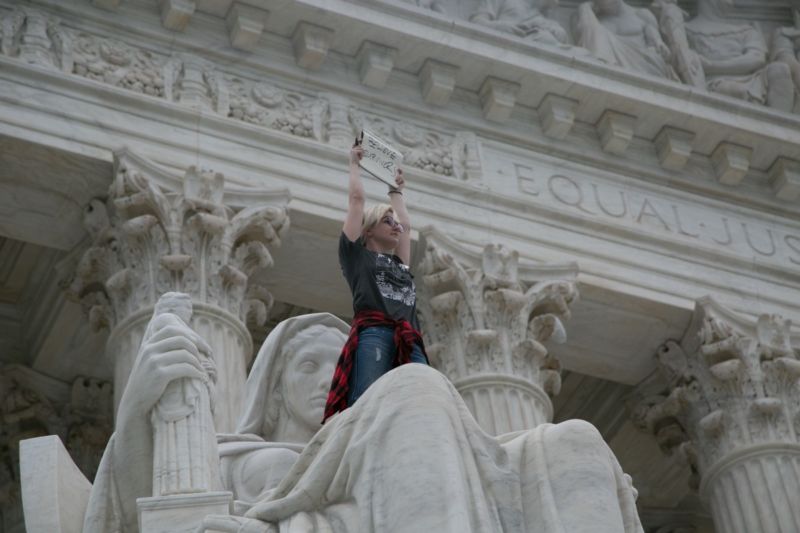Study: Magnetism model reveals long-term non-partisan nature of SCOTUS

Enlarge / Protesting confirmation of US Supreme Court Justice Brett Kavanaugh on October 6, 2018, outside Supreme Court in Washington, DC. (credit: Emily Molli, Nur Photo/Getty Images)
The confirmation of Brett Kavanaugh to the US Supreme Court last week raised fears of a hyper-partisan SCOTUS and loss of public trust in the institution-particularly in light of Kavanaugh's highly emotional and partisan testimony during the Senate hearing on the sexual assault allegations against him. But a new study offers a glimmer of hope, concluding that in the long run, there is more consensus than partisan difference in SCOTUS decisions.
It's the first quantitative model to capture detailed correlations in voting patterns of the SCOTUS justices across time. Cornell University graduate student Eddie Lee created a hypothetical "Super Court" to study the voting patterns of Supreme Court justices serving from 1946 through 2016. Neither Kavanaugh nor the other recently confirmed justice, Neil Gorsuch, is included in the analysis, which was recently published in the Journal of Statistical Physics. It builds on Lee's 2015 study examining the voting patterns of the second Rehnquist court (1994-2005), which found justices were far more prone to unanimity in their decisions despite their ideological differences.
It might seem strange to create such a Super Court scenario, but Lee argues that it makes sense to do so, given how much different justices overlap with each other because of their lifelong tenure. So even if Justice A never actually voted with Justice C, both likely served at the same time (and thus voted with) Justice B. This makes it possible to infer from that when Justices A and C might have voted together.
Read 6 remaining paragraphs | Comments